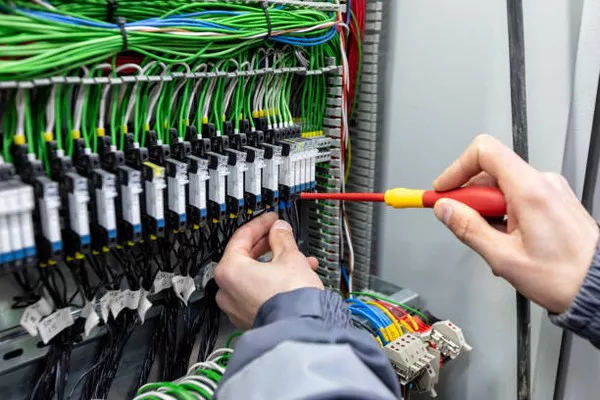Transformer oil, also known as insulating oil, plays a critical role in the operation of electrical transformers. One of the key parameters used to assess the quality and reliability of transformer oil is its breakdown voltage. Understanding breakdown voltage is essential for maintaining the integrity and efficiency of electrical systems. In this article, we delve into what breakdown voltage is, its significance in transformer operation, factors affecting it, testing methods, and its importance for ensuring safe and reliable power transmission.
1. What is Breakdown Voltage?
Breakdown voltage, often referred to as dielectric strength, is the electric field intensity at which insulating material—such as transformer oil—loses its insulating properties and allows electrical current to flow through it. In simpler terms, it is the voltage at which insulation breaks down, leading to electrical arcing or sparking. For transformer oil, the breakdown voltage indicates its ability to withstand high electrical stress without failing.
Importance of Breakdown Voltage in Transformers
In electrical transformers, where high voltages are involved, maintaining proper insulation is crucial for safe and efficient operation. Breakdown of insulation can lead to equipment damage, power outages, and even pose risks to personnel safety. Breakdown voltage serves as a measure of the insulation quality of transformer oil, ensuring that it can withstand the high voltages encountered during normal operation.
2. Factors Affecting Breakdown Voltage
Several factors influence the breakdown voltage of transformer oil:
Oil Composition: The composition of transformer oil significantly affects its dielectric strength. Mineral oils, which are commonly used as transformer oils, have different breakdown voltages compared to synthetic or vegetable-based oils.
Contaminants: Contaminants such as moisture, dirt, and gases can reduce the breakdown voltage of transformer oil. Moisture, in particular, is a significant contributor to reduced dielectric strength as it decreases the oil’s resistance to electrical stress.
Temperature: Breakdown voltage is also temperature-dependent. As temperature increases, the dielectric strength of transformer oil tends to decrease. Therefore, it is essential to consider temperature variations when assessing breakdown voltage.
Aging: Over time, transformer oil undergoes degradation due to thermal and oxidative processes, leading to a decline in breakdown voltage. Aging of the oil can result in the formation of sludge, acids, and other by-products that compromise its insulation properties.
3. Testing Methods for Breakdown Voltage
Measuring the breakdown voltage of transformer oil is a crucial aspect of maintenance and quality control. Several standardized testing methods are used for this purpose, including:
ASTM D877 Test Method: This test method involves subjecting a sample of transformer oil to a gradually increasing voltage until breakdown occurs. The voltage at which breakdown occurs is recorded as the breakdown voltage.
IEC 60156 Test Method: Similar to ASTM D877, this method involves applying a gradually increasing voltage to the oil sample until breakdown. The test conditions and procedures are specified by the International Electrotechnical Commission (IEC).
Automated Test Equipment: In modern testing facilities, automated equipment is often used to conduct breakdown voltage tests. These systems offer precise control over test parameters and ensure consistent and reliable results.
4. Importance for Safe and Reliable Power Transmission
Ensuring that transformer oil maintains adequate breakdown voltage is essential for the safe and reliable transmission of electrical power. Transformers are critical components of power distribution networks, and any failure in insulation can lead to costly downtime and repairs. Regular testing and maintenance of transformer oil help identify potential issues before they escalate, minimizing the risk of equipment failure and power outages.
FAQs (Frequently Asked Questions)
Q1: How often should breakdown voltage testing be performed on transformer oil?
A1: Breakdown voltage testing should be conducted periodically as part of routine maintenance practices. The frequency of testing may vary depending on factors such as the age of the transformer, operating conditions, and regulatory requirements. Generally, it is recommended to perform testing annually or as specified by relevant standards and guidelines.
Q2: Can breakdown voltage testing be performed on-site or is laboratory testing required?
A2: Breakdown voltage testing can be conducted both on-site and in specialized laboratories. On-site testing offers the advantage of convenience and immediate results, but it may not always provide the same level of precision and accuracy as laboratory testing. For critical assessments or when precise measurements are required, laboratory testing is preferred.
Q3: What are the consequences of inadequate breakdown voltage in transformer oil?
A3: Inadequate breakdown voltage can lead to insulation failure, which in turn may result in equipment damage, power outages, and safety hazards. Insufficient insulation can cause electrical arcing, overheating, and short circuits, posing risks to personnel and neighboring equipment. Therefore, ensuring proper breakdown voltage is essential for maintaining the integrity and reliability of electrical systems.
See Also What Is The Yellow Transformer Called
In conclusion
Breakdown voltage is a critical parameter for assessing the insulation quality of transformer oil. Understanding its significance, factors influencing it, testing methods, and the importance of maintaining adequate breakdown voltage is essential for ensuring the safe and reliable operation of electrical transformers and power distribution systems. Regular testing and maintenance practices are vital for identifying and mitigating potential risks associated with inadequate insulation.

